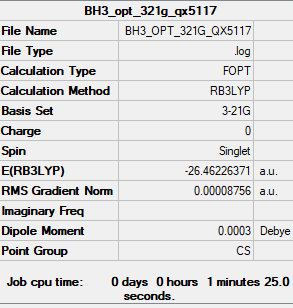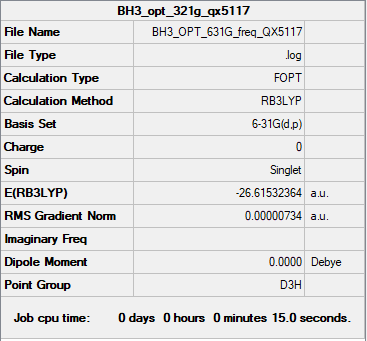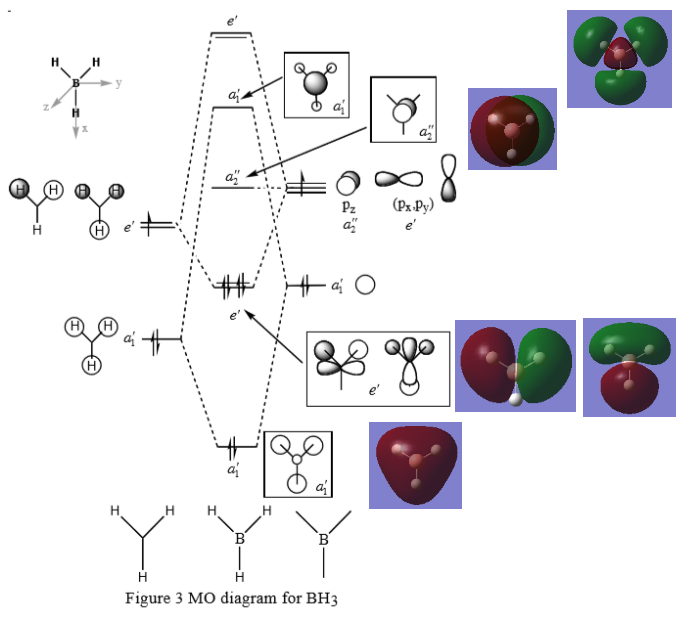Rep:Mod:qx5117lab2
Appearance
EX3 Section
BH3
B3LYP/3-21G level
Item Value Threshold Converged? Maximum Force 0.000217 0.000450 YES RMS Force 0.000105 0.000300 YES Maximum Displacement 0.000900 0.001800 YES RMS Displacement 0.000441 0.001200 YES
B3LYP/6-31G level
E = -26.61532 a.u.
Item Value Threshold Converged? Maximum Force 0.000012 0.000450 YES RMS Force 0.000008 0.000300 YES Maximum Displacement 0.000064 0.001800 YES RMS Displacement 0.000039 0.001200 YES
Low frequencies --- -10.3498 -3.4492 -1.2454 -0.0054 0.4779 3.2165 Low frequencies --- 1162.9519 1213.1527 1213.1554
BH3 molecule |
frequency analysis
Frequency analysis log file: Media:BH3 OPT 631G FREQ QX5117.LOG
| wavenumber (cm-1 ) | Intensity (arbitrary units) | symmetry | IR active? |
type |
|---|---|---|---|---|
| 1163 | 93 | A2 | yes | out-of-plane bend |
| 1213 | 14 | E | yes | bend |
| 1213 | 14 | E | yes | bend |
| 2582 | 0 | A1 | no | symmetric stretch |
| 2716 | 126 | E | yes | asymmetric stretch |
| 2716 | 126 | E | yes | asymmetric stretch |
Q:Why are there less than six peaks in the spectrum, when there are obviously six vibrations?
Because there is a symmetric stretch at 2582 cm-1 with zero intensity, so no peak. And there are two sets of identical vibration at 1213 and 2716 cm-1. For these four vibration, there are only two peaks observed as these are degenerate. In total, there are only three peaks observed at 1163, 1213, 2716 cm-1.
MO of BH3
- ↑ Hunt research group. 2019. Lecture_4_Tut_MO_diagram_BH3. [ONLINE] Available at: http://www.huntresearchgroup.org.uk/teaching/teaching_comp_lab_year2a/Tut_MO_diagram_BH3.pdf. [Accessed 17 May 2019].




